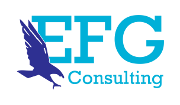New report says UAE will have 82,994 hotel rooms by 2021 as influx of Indian, Saudi and UK tourists is set to continue. Expo 2020 and its legacy, District 2020, are expected to have a positive long-term influence on the growth of inbound arrivals to the UAE from the country’s top source markets between 2018 and 2023, according to new research.
Data published ahead of Arabian Travel Market, which takes place at Dubai World Trade Centre from April 28 to May 1, showed the UAE is set to welcome 8.92 million visitors from the top five source markets by 2023. Figures revealed that the number of Indian visitors travelling to the UAE will increase at an annual rate of 7 percent to 3.01 million in 2023. The Colliers International report also said arrivals from Saudi Arabia and the UK will witness an increase of 2 percent and 1 percent to 1.76 million and 1.28 million respectively over the same period.
While the UAE’s top source market rankings are expected to remain mostly unchanged post-Expo 2020, the research also reveals the Russian and Chinese source markets will show above average annual growth rates for inbound passenger arrivals. Danielle Curtis, exhibition director ME, Arabian Travel Market, said: “The number of Russian tourists travelling to the UAE will increase at a compound annual growth rate (CAGR) of 12 percent to 1.6 million in 2023, while the number of Chinese tourists visiting the UAE will increase at a CAGR of 8 percent to 1.27 million over the same period, according to the data.”
Curtis added that Russian visitors to the UAE have grown in recent years due to the introduction of additional and direct airline routes and relaxed UAE visa regulations. With 20 million annual visitors expected to visit Dubai by 2020, the overall hospitality supply in the emirate is expected to increase by 39 percent from 59,561 keys in 2017 to 82,994 in 2021 to meet this demand. Meanwhile in neighbouring emirate Abu Dhabi, the number of rooms across three, four and five-star properties is forecast to grow 13 percent from 21,782 in 2017 to 24,565 in 2021.
“Just as Dubai and Abu Dhabi have their own unique set of visitor attractions, we are now seeing the northern emirates carving stronger identities, supported by their respective tourism authorities. And, while Ras Al Khaimah, Sharjah and Fujairah are smaller than Dubai and Abu Dhabi in terms of supply, they are evolving quickly,” Curtis said. Ras Al Khaimah is working on an unprecedented pipeline, which will more than double the number of hotel rooms, from 4,019 in 2017 to 9,078 in 2021, the largest proportionate pipeline in the GCC. The number of hotel rooms in Sharjah is also expected to more than double between 2017 and 2021, taking the total number of hotel rooms in the emirate to 5,295 by 2021. Meanwhile, Fujairah will add almost 500 keys over the same period taking its total stock to 2,543 rooms.
SOURCE: www.amp.arabianbusiness.com

